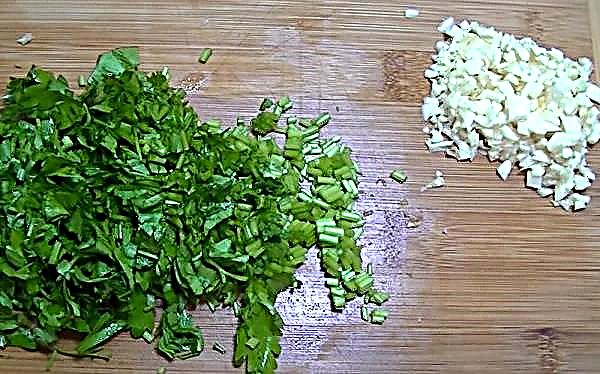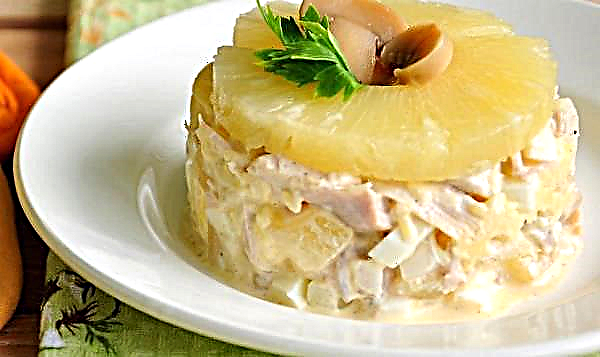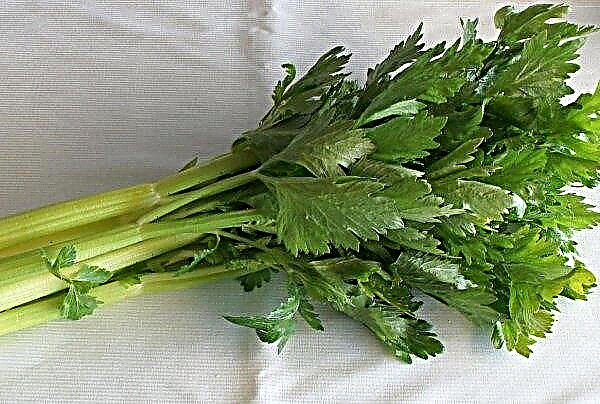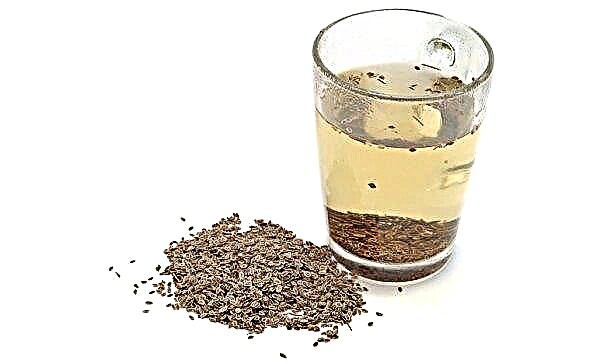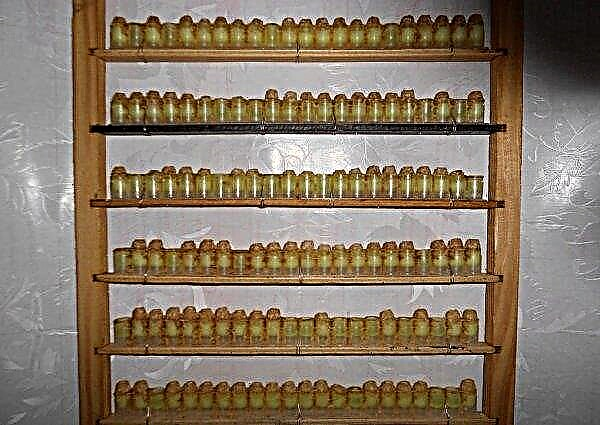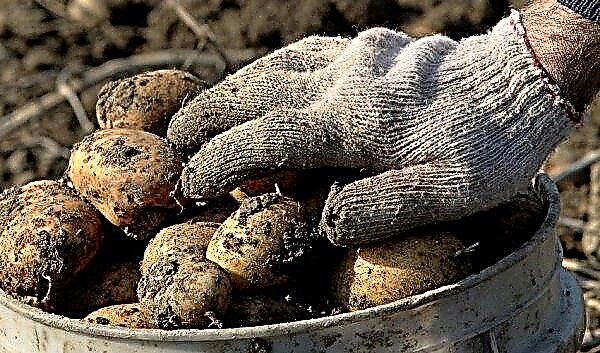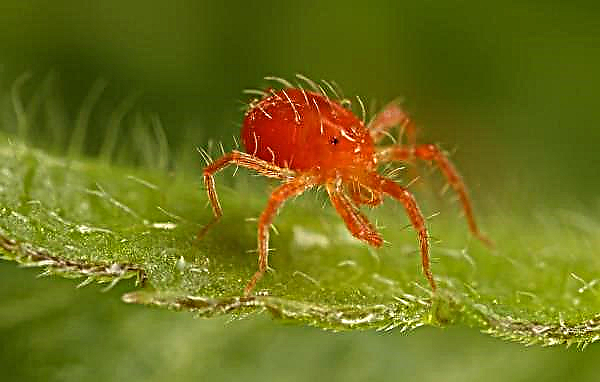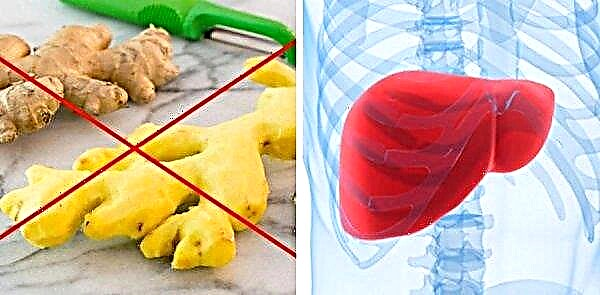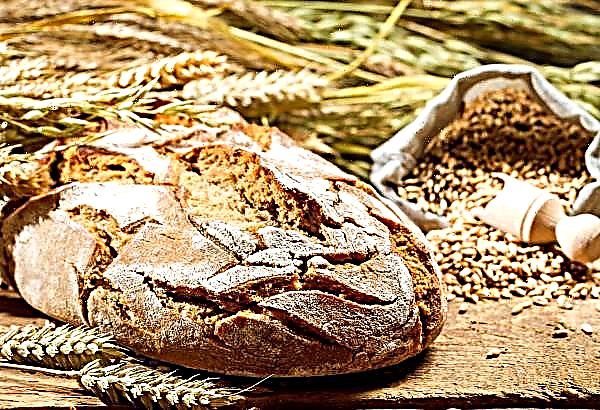The mortality of chickens is a common problem that both beginner poultry farmers and experienced farmers have to face. It would seem that maximum efforts and efforts were made to ensure that your livestock population grows healthy and full, however, there are a lot of factors that can affect the health of birds, so it is so important to quickly orient yourself and understand the cause of the death of chickens.
Why chickens die: the main reasons
It is generally accepted that in most cases, chickens and young are more susceptible to diseases and mortality, but this is not entirely true, because quite often the livestock of adults begins to die. That is why it is so important to know why this is happening, which will help to avoid losses and losses on the farm.
Improper feed and its effects
An improperly built diet adversely affects the health of both adult chickens and young females. Especially at risk are chickens - their body is just starting to develop and requires twice as many nutrients.
Inadequate intake of vitamins in the body can lead to a painful condition, and then to the death of birds.
Important! Underfeeding leads to the same disastrous consequences as overfeeding, therefore, laying hens should be fed no more than twice a day, and if the bird is bred for meat, then no more than 3-4 time.
Often this problem occurs when the bird feed is changed to a lower quality one or when supplementary foods are added independently, which often fall into the bird feed, like leftovers from the hosts table. Feed that negatively affects the health of chickens includes:
Feed that negatively affects the health of chickens includes:
- green or sprouted potatoes;
- flour products;
- soups;
- cheese and other dairy products.
If the bird has the first symptoms, such as lethargy, low mobility, decreased appetite, and a change in litter, all these signs can cause concern and, first of all, to review the diet of birds.
Unsuitable conditions
It should be remembered that poor living conditions adversely affect not only the health of the bird, but also significantly reduce their productivity.
Did you know? Hens and roosters are the most common birds on our planet. There are 3 individuals per inhabitant of the Earth.
That is why when arranging a chicken coop, first of all, it is necessary to ensure:
- free access of chickens to the feeder - you need to calculate the place so that each bird can get to the feed at any time;
- a lot of light in the chicken coop - with a lack of natural light, the chickens wither and lose weight;
- appropriate temperature conditions - the optimum temperature for chickens is + 13-15 ° C;
- lack of drafts.

Diseases
Unfortunately, even fulfilling all the requirements for proper bird keeping, mortality can occur due to infectious diseases. If you know the most common diseases and their symptoms, this will help in time to carry out the necessary diagnostics and stop the pestilence of the bird, escaping with small losses.
Dropsy
This disease is not infectious, and therefore does not pose a risk of infection for the remaining birds in the chicken coop. According to statistics, about 5-10% of chickens suffer from dropsy, however, at the moment there is no effective medicine against this ailment.
Usually, having measured the time and money spent on treating a bird, veterinarians suggest slaughtering such chickens.
The main symptoms of dropsy are:
- enlargement of the abdomen, its unnatural form;
- general lethargy, apathy;
- tense gait, shortness of breath.
It is believed that dropsy is a secondary disease that appears when previous intestinal diseases are transferred or when the heart or kidneys are disturbed. Diagnosing such a disease is quite simple - you should push the chicken on the abdominal cavity. A sick bird will have a tense stomach.
Pasteurellosis
This bacterial disease is a common reason why chickens die, and not only birds, but also other animals can become its peddlers.
If the causative bacteria of this disease are detected, the chickens are immediately sent one at a time for slaughter, and before the youngsters enter the chicken coop, the room undergoes disinfection and a number of preventive measures.
The main symptoms of pasteurellosis are:
- decreased appetite, constant thirst;
- cyanosis - darkening of the scallop;
- increased body temperature - + 43–44 ° С;
- discoloration of the stool;
- apathy;
- secretion of foamy mucus from the nose;
- hoarse, heavy breathing;
- infected chickens sleep for a long time.
For the correct diagnosis of this disease, corpses of birds are delivered to the laboratory for analysis and research. In the blood sampling one day after the onset of death, bacterial growth will be noticed. At autopsy, the liver and spleen are checked, smears are taken.
The whole chicken is also examined: with this disease, the muscles acquire a blue color, almost all organs exhibit small hemorrhages.
Ascariasis
Refers to bacterial diseases that arise as a result of the ingestion of helminths (worms) in the intestine - roundworm. By concentrating inside the intestine, they disrupt its mucous membrane and injure the walls. If untreated, the number of worms is constantly increasing, which can lead to rupture of the intestines and hemorrhage.
Juveniles infected with ascariasis are inhibited in growth and can die, the body of adults is greatly depleted.
In adult hens, the symptoms of the disease are practically absent, in young animals, the following are observed:
- lethargy and lack of appetite;
- change in litter consistency;
- the pallor of the scallop.
To diagnose ascariasis, signs of helminths or their larvae are detected in the droppings of infected chickens.
Newcastle disease
The disease is viral in nature, enters the bird's body by airborne droplets, through food or through any excretion of the body. Mites can become carriers of this disease.
Important! There are cases when a person can also be infected with this virus, in which case the disease in him manifests itself as conjunctivitis.
Once in the body, the virus spreads very quickly through the blood to all organs and tissues. The central nervous system is affected, the work of the respiratory organs, as well as the digestive system, is disrupted.
The main signs of the disease:
- weakness and lethargy;
- lack of appetite;
- excited state, fever;
- an increase in goiter;
- loss of orientation in space;
- change in the consistency of the litter (blood streaks and mucus are added).
For an accurate diagnosis, you will need to conduct laboratory tests, which include clinical tests, as well as changes in the state of internal organs after death.
Arthritis
This disease is associated with inflammation of the joints and adjacent tissues. The reasons that caused this disease can be many: starting from the usual mechanical damage and ending with the development of a viral disease.
Due to the disease, the chicken not only moves with difficulty, but is not able to hatch eggs, it is hindered by joint pain.
The main symptoms of arthritis are:
- lameness, unwillingness to move;
- the joints on the legs increase in size, hot to the touch.
It is easy to diagnose these symptoms and, if there are no symptoms associated with the virus, the conditions for the care and maintenance of the birds should be reviewed.
Causes of chickens death in winter
Winter is a difficult test for the body of chickens, because along with many infectious and viral diseases, the living conditions often worsen.
Consider the main causes of chicken diseases in the cold:
- lowering the temperature in the chicken coop and increasing humidity are ideal conditions for the spread of viral and colds;
- deterioration in feed quality and lack of vitamins in the body;
- lack of activity due to low temperatures outside.
All the factors that primarily affect the immunity of the bird, and therefore the ability of the bird's body to independently and quickly cope with any infection, are affected.
Treatment for possible diseases
After the symptoms of the disease have been identified, the disease has been diagnosed and an accurate diagnosis has been made, you should think about what to do next and whether it is worth taking treatment at all.
Did you know? In 1880, the French scientist Louis Pasteur accidentally managed to open a vaccine against chicken cholera. After several unsuccessful attempts, the professor for forgetfulness left a culture with cholera microbes in a thermostat. In this form, the virus was introduced to the chickens and, to Pasteur's amazement, they not only did not die, but the disease itself was transferred in a very mild form.
There are many medications and antibiotics to fight infectious diseases, but most often, assessing the costs of treatment and the chances of a full recovery, veterinarians advise the bird to slaughter. However, only the owner of the farm makes the final decision, so we will consider the treatment of the following diseases:
However, only the owner of the farm makes the final decision, so we will consider the treatment of the following diseases:
- Dropsy. To alleviate the condition, it is necessary to remove excess fluid from the abdomen of the chicken by piercing the abdominal cavity with a syringe and pumping it further. For the prevention and further maintenance of the body, a large amount of greenery is added to the food of chickens and sealed with a decoction of bearberry or horsetail.
- Pasteurellosis. With this disease, it is possible to help hens only in the first hours after the detection of symptoms at the initial stage. Medicines are offered: “Levoerythrocycline” (dosage - 1-2 ml of the drug per 1 kg of poultry weight, given for 5 days), “Trisulfone” (200 g of the drug is diluted in 100 l of water, treatment - 5 days), suspension “Cobactan” (recommended dose: 0.1 ml per 1 kg of weight, prick once a day, 3-5 days).
- Ascaridosis. One of the many diseases that is very well treated and with the right actions does not lead to mortality. Today, there are many medications that are used to rid birds of helminths: piperazine (in the form of salts in a proportion of 1 g per adult chicken, added to food or dissolved in water, given for two days), Mebendazole (added in poultry feed at a rate of 40 ml per 1 kg of weight), Nilverm (added to moistened feed 1 time, at a rate of 0.04 g per 1 kg of chicken weight). Along with medicines, there are also a sufficient number of alternative methods that relieve and prevent the appearance of helminths in chickens: for example, pumpkin seeds, garlic, onions, dried rosehips added to the feed. Branches of dried wormwood or tansy are added to the litter of chickens.
- Newcastle disease. This disease is not amenable to treatment, which means that when such a diagnosis is established in at least one bird, the entire livestock of chickens is killed. To prevent the development of this viral disease, chickens are vaccinated.
- Arthritis. To treat such a disease, antiviral drugs are used in conjunction with antibiotics (Sulfadimethoxin, Polymyxin-M Sulfate, Ampicillin, Benzylpenicillin) in the required dose. The average duration of use is 5 days, the medicine is administered either intramuscularly, or given with food.

Disease prevention
It is important to understand that most diseases of chickens are caused by improper conditions of keeping individuals and diet.
Adhering to the following recommendations, you can avoid many diseases:
- For the full development and support of immunity, poultry feed must be benign, and the following series of vitamins must be contained in the diet in the required quantity: groups B, vitamin D, vitamin B12 and vitamin A.
- A constant preventive disinfection of the premises where the bird is kept is necessary in order to avoid the appearance of rats and ticks, as one of the most important carriers of infectious diseases.
- Timely vaccinate against infectious ailments.
Extra Care Tips
To prevent the "prosperity" of infectious diseases in your household, special attention should be paid to the hygiene of the room and equipment: it is necessary to disinfect it before placing the chickens in the room. In the future, all equipment that interacts with the bird (feeders, drinking bowls, syringes for vaccination) must be thoroughly cleaned, the room must always be clean and ventilated, and the bedding for chickens dry.
In the future, all equipment that interacts with the bird (feeders, drinking bowls, syringes for vaccination) must be thoroughly cleaned, the room must always be clean and ventilated, and the bedding for chickens dry.
As it turned out, chickens are easily exposed to many diseases, but the correct maintenance and quick reaction to the first symptoms of the disease in the bird will help the owner of the farm to get rid of "little blood" without losing the entire population in one disease.

